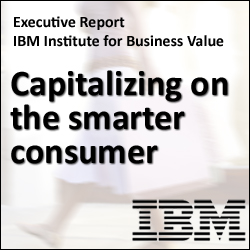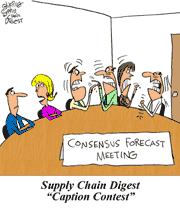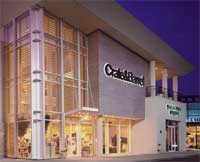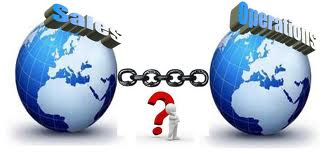 |
October 4, 2013- Supply Chain Flagship Newsletter |
 |
| |
 |
New Executive Report Available from IBM |
 |
|
|||||||||||||||||||||||||||||||||||||||||||||||||||||||||||||||||||||||||||||||||||||
Just What is a Supply Chain Strategy?
|
||||||||||||||||||||||||||||||||||||||||||||||||||||||||||||||||||||||||||||||||||||||
| GILMORE SAYS: |
"A supply chain strategy involves adding a new rudder, with a captain and a crew that know exactly how to get to their destination, but with a plan that has some resiliency built-in for the inevitable storms the ship will encounter along the way." WHAT DO YOU SAY? |
It was based on his new book "Supply Chain Transformation," importantly sub-titled"Building and Executing an Integrated Supply Chain Strategy."
He said there that not long ago, he asked members of the Forum - mostly large, well-known firms - if their companies had supply chain strategies.
To Dittmann, a supply chain strategy is defined as a formal written plan that details what actions the organization is going to take over a multi-year horizon.
Among Forum members, something like 18% had such a strategy. That seemed surprisingly low, Dittmann thought, so they conducted a survey among a larger group of companies. In that research, only about 15% of companies had a formal supply chain strategy.
That may seem low to some but not to me. I wonder how many of the "strategies" among the companies claiming to have one would really pass muster upon a review.
I have rarely seen a company with multi-year supply chain strategy, with one major exception. That is for companies that have embarked on a major supply chain transformation, especially if that transformation involves significant changes to the physical network. In recent years, that would include companies such as Home Depot, Hershey Foods, Kimberly-Clark, and many more.
In those situations, which generally involve big capital expenditures and expenses for closing facilities, promises to Wall Street about cost reduction expectations when the transformation is complete, etc., then of course a written, multi-year strategy is needed.
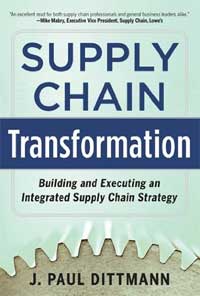 But is that really a strategy - or more like a project plan? A little of both.
But is that really a strategy - or more like a project plan? A little of both.
So, if you are not preparing for such a major transformation, do you need a supply chain strategy? That is really the question.
A lot of things get confused as being strategies when they are something else - a goals and objective document, for example. Goals and objectives likely are a necessary part of a strategy, but they are not a strategy by themselves.
I met an executive of a then fast growing women's apparel chain in about 2007, where he related to me what I think is a not unusual scenario: the chain had been growing so fast for many years, its stock price soaring over that period as well, that the job of the supply chain was really just to support that growth. Cost were important, but not as important as ensuring goods were on the shelf, and that new stores opened on schedule at a breakneck pace.
Now, however, growth was inevitably slowing - what was the supply chain's mission now, and how should it get there?
"We need a supply chain strategy," he said. Could I provide any help? I offered a few thoughts then and there, and we later exchanged a couple of emails, but I never really heard how that exercise turned out.
Well, I wish I had Dittmann's new book to recommend then, because it provides a prescriptive model relative to how to build a supply chain strategy a company like that apparel retail could easily follow.
And like most things in business, that strategy should start with the customer, Dittmann says. A supply chain strategy -by definition a forward-looking document - should anticipate changing customer needs and define how the supply chain is going to evolve to meet those new requirements.
That is in fact an exercise that Walgreens has recently gone through under the relatively new supply chin leadership of Reuben Slone, who worked with Dittmanm at Whirlpool and has co-written books and articles with him.
A forward-looking view of Walgreens' customer needs identified 11 new supply chain capabilities that would be required over the next few years. That in turn resulted in 25 separate projects to upgrade Walgreens' supply chain to achieve those capabilities. (Interestingly, at last Spring's WERC conference, Kathleen Shafer, director of supply chain transformation at Walgreens' rival CVS, gave an interesting presentation on how it was using a very similar process to upgrade its supply chain. Not sure if that is pure coincidence or not.)
So, back to the question of whether we all need a documented supply chain strategy: Do Finance, Marketing, HR, etc. all have such strategies? I don't think so. IT often does, however, because technology changes and initiatives often play out over several years, with big CapEx dollars involved and major decisions about direction that need to be formalized.
But I think supply chain is different than most other functions. First, in physical product companies, supply chain often accounts for 60-80% of total costs, a huge number that therefore may be deserving of more detailed, multi-year planning.
Second, supply chain generally serves as a services organization for the rest of the company. A strategy document can help the company's functions and executives to buy-into and thus support those supply chain strategies. An easy example would be plans to roll-out robust S&OP capabilities across the globe over a multi-year span.
With those two thoughts, it also seems to me that if a company as a whole has a formal, multi-year strategy document, then it makes perfect sense the supply chain have one that mirrors the corporate plan. The strategic document can be the key tool that helps keep the supply aligned with the business.
In his book, Dittmann lays out a nine-step plan for building a supply chain strategy.
1. Start with customers' current and future needs (as discussed above)
2. Assess current supply chain capabilities relative best in class
3. Evaluate supply chain "game changers" (what megatrends will impact customers and the supply chain?)
4. Analyze the competition (something too few do for sure)
5. Survey technology - what is new or coming out there?
6. Deal with supply chain risk - risk management needs to be part of the strategy document
7. Develop new supply chain capability requirements and create a plan to get there
8. Evaluate current supply chain organizational structure, people, and metrics
9. Develop a business case and get buy-in
Obviously, there is a lot more to it than just knowing those nine steps, and the book takes the reader through each of these steps in detail a chapter at a time.
I was remiss for not tackling the strategy question for so long, and there is a lot more to say, so look for a part 2 on this soon - maybe with some of your comments.
"I often see companies without a supply chain strategy chasing the latest hot trend or flavor of the month, Dittmann writes early on in the book. "Like a ship without a rudder, it sees any wind as favorable."
A supply chain strategy involves adding a new rudder, with a captain and a crew that know exactly how to get to their destination, but with a plan that has some resiliency built-in for the inevitable storms the ship will encounter along the way.
This is a certainly topic worth more exploration, both here and across the industry.
Do too few companies have true supply chain strategies? Why? Does your company have one? Let us know your thoughts at the Feedback section below.
| View Web/Printable Version of this Page |
|
|
|
YOUR FEEDBACK
This week, the last few of the many e mails we received on guest columnist David Schneider's two-part series on Systems Thinking in the Supply Chain - or lack thereof.
That includes of Feedback of the Week from Shelley Jordan of Nobcessory, who agrees causal diagrams can be very valuable.
Feedback of the Week - On Systems Thinking in the Supply Chain
I believe the casual diagrams can be used to help explain the system level to all as well as help make decisions since it is a visual approach. In business there are many types of people and they are all needed for different purposes. It is a matter of uniting their strengths of what they can do to maximize the overall company abilities. If you think of each person and their purpose as a silo and the business operations as the systems and the executives as the leaders then it is a matter of these great leaders lassoing these silos together utilizing these business operations / systems as best as possible to maximize profit for the company. I am saying this because basically you can also think of one business as a silo in the supply chain world. Supply chain systems and overall technology has advanced very quickly in the past few years and at a much faster pace than most individuals and silos are comfortable. Therefore, there is an inconsistency between silos of what and when to implement various systems and how to even make the decisions to implement the systems. A lot of that is because of the complexity of the systems. That is why the casual diagrams are needed, maybe even by an outsider, to help explain the differences in the various systems and how they will affect the silo (business) and the connections with other silos and the future. I believe silos need to be communicating even more. It is like we need a leader of all the silos in the supply chain world (e.g. SCDigest) to make sure the silos understand the new technology and systems and what the needs are of their silo and the silos together and what effect the silos working together will have on the inventory, fuel cost, communities, environment, employment, crime, welfare, etc. I wish it was that simple, but I happen to think high level in casual diagrams and in deep details at the system level and at life level as well, that is why I got into this analogy. Shelley Jordan
|
||
| More Feedback on Systems Thinking | ||
Do we have systems thinking in how we pay supply-chain participants? Until we do, there how much hope can we have? Tell me how they are paid and I'll tell you how they think. Thomas A. Moore
Editor's Note:
Fine point.
|
||
The problem is that except for very deep problems/issues that absolutely require it, systems thinking is just too hard and takes too long - let's just say it. There is simply not enough bandwidth with Lean staffing these days - and management expecting rapid response and results - to apply true systems thinking most of the time.
Is it the right way in theory? Of course. But there are too many constraints in the real world for it to be applied in all but a rare set of cases at more than a cursory level.
|
SUPPLY CHAIN TRIVIA ANSWER
Q: About what percent of diesel prices are comprised by the cost of the oil itself?
A: It varies a bit by the price of diesel, but right now about 65%, according to the US Energy Information Administration. The rest is refining, transportation, profit, etc.
| © SupplyChainDigest™ 2003-2013. All Rights Reserved. SupplyChainDigest PO Box 714 Springboro, Ohio 45066 |
POWERED BY: XDIMENSION
|
